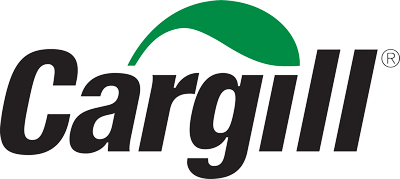- VIEW ALL ARTICLES
- A more precise and sustainable approach to next gen diets
A more precise and sustainable approach to next gen diets
With Luke Barnard, Poultry Technology Application Specialist, and Patrick Beyeler, Customer Formulation Nutritionist

The development of new broiler poultry diets is taking advantage of new technology and more in-depth knowledge. Cargill UK poultry specialists Luke Barnard and Patrick Beyeler explain how this cutting edge work is being used to bring more precise and sustainable diets to UK poultry producers.
“We consider three key areas - or pillars – in developing and formulating broiler poultry diets,” says Luke Barnard.
“These are the nutrient requirements of the animal, in-depth knowledge of raw materials and feed additives and, more recently included and unique to Cargill’s global poultry team, in depth knowledge of the bird’s gut microbiome.”
Integration of these pillars of knowledge in new poultry diets has been demonstrated in Cargill’s Neochicc® range designed for young birds in the first 120 hours of life. “This young chick diet is integral in ‘getting the birds off to the best possible start and in setting up the bird’s gut health for a lifetime,” he adds.
Cargill’s global poultry team has made big strides in its understanding of the interaction between the poultry microbiome and gastrointestinal tract (GIT) heath.
Bacterial database
At the core of this is a large, and growing, database of gut microbiome data built up from 36,000 flocks where cloacal swabs have been analysed and logged. It provides a base for comparison with samples from new flocks and for monitoring variations and changes in microbiome populations. This database is an integral part in Cargill’s broiler microbiome intelligence solution. But these analyses and results relies on powerful statistical designs with advanced artificial intelligence models to extract information regarding key bacterial relationships within the gut of the bird. These are interpreted for practical application by a team of highly skilled Cargill specialists.
“Gut microbiome is an important driver in determining the health and performance of the broiler, so this information is valuable when it comes to fine-tuning nutrition and management practices on farm. But it is also very valuable in developing new diets. These diets should include a more precise line-up of ingredients to encourage the good bacteria and counter the effects of bad bacteria in the gut microbiome. The diet needs to work as hard at feeding and steering the microbiome as is does in supporting growth of the animal itself’.

Additive value
Feed additives can be beneficial here, such as Intella® Dual developed by Cargill. This is a postbiotic-phytogenic blend of stabilised essential oil compounds proven to promote efficient broiler performance.
“Intella® Dual, which is included in Neochicc® helps to create an environment in the GIT where favourable bacteria flourish and less favourable bugs don’t,” says formulation specialist Patrick Beyeler.
“We also look at levels of fermentable protein in
These can be more specific to meeting the bird’s requirements and avoiding excess that can encourage ‘bad’ bacteria in the GIT and cause inflammation and disease.”
The GIT is an interface with the outside world and although it is hidden from the outside world, it faces the same challenges.
“Less challenges mean less inflammation,” adds Mr Barnard. “We need to be ‘kind’ to the animal and minimise any stress here. By doing so, we can improve health and welfare which in turn will support improved feed conversion, better growth rates and improved flock efficiency and sustainability.”

Precision diets
Nutritional progress will come from our greater understanding of poultry requirements to meet specific performance targets, and more knowledge of the digestibility and availability of the nutrients in raw materials. Information on the microbiome interaction and population maturation will also fuel progress in developing improved diets, which in turn will enable birds to get more value from the feed, with less waste and better health and welfare performance.
“More knowledge and the application of new technology that uses AI and advanced ingredients are the cornerstone of the next generation of more precise diets that will help chicks achieve their genetic potential in a more efficient and sustainable way.
“Producers will be able to opt for high quality diets that meet their specific needs in terms of growth rates and performance, but also help to manage, and counter, challenges highlighted in the specific gut microbiome on their units.”

